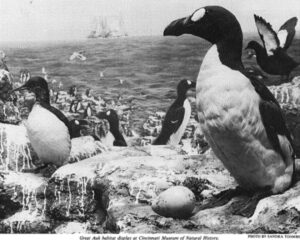In caves throughout New Zealand and Australia, you can see the night sky up close. A boat drifts through the cool, dark caverns and passengers can look up and find little balls of blue-green light pulsing on the dark ceiling.
People refer to these balls of lights as glowworms. However, they are not worms but rather the larvae stage of the fungus gnat. Their scientific name is arachnocampa, and they are endemic to those two countries. They live in dark, secure places like caves or very thick forests. To thrive, they need peace and quiet, with little or no external stimulation from wind or human interference. They are sensitive to light and easily affected by temperature changes.

Exploring the caves. Photo: Shaun Jeffers/Shutterstock
Caves are perfect for this glowing animal, as they have consistent temperatures around 16°C throughout the year. Visitors are under strict rules to not use flash photography and videography. The glowworms will stop their bioluminescent dances if light is shone on them. Despite this lack of access to electronics, this allows you to savor the moment more.
The larvae glows from their abdomen due to a chemical reaction within their bodies. Luciferin and a related enzyme called luciferase reacts with an energy molecule called adenosine triphosphate as well as oxygen in the surrounding air. Fireflies in North America glow due to the same chemical reaction.
You may see but not touch these glowworms. If you do, they turn off their light and it could take a long time before they start up again.
The larvae stage of the fungus gnats takes six to 12 months. One larva can grow up to three centimeters in length. During this period, it makes itself a silky nest to tuck into and create a long, sticky thread web with dew-like bulbs. From this little nest, it can weave up to 70 threads.
The threads contain a sticky, mucus-like substance which traps prey like mosquitos, moths and even bigger critters like millipedes. They are made up of water and urea. The unsuspecting animals are drawn in by the gently pulsing glow but get stuck into the sticky web. The larva then pulls the web up and feasts on its prey. If they don’t get food, they might eat each other out of necessity. But the hungrier the larvae, the brighter they glow, which makes for a more stunning spectacle.
After the larvae stage, they turn into pupae. This is a much shorter process. The female glows to attract a male, lays over 130 eggs, then dies within a matter of days. The eggs hatch three weeks later and the process repeats.
Where to see them
There are numerous glowworm caves throughout New Zealand and Australia. Perhaps the most famous of them all is Waitomo Glowworm Caves on North Island, New Zealand.

Glowworms up close. Photo: DextairPhotography/Shutterstock
The Waitomo region is a limestone karst landscape, formed over the last 30 million years. Water and air helped dissolve the porous rock and formed these magnificent caves with intricate features like helecities, columns, stalactites and stalagmites. The glowworms in this cave are carefully monitored and preserved by scientists.
In Australia, you will find glowworm caves in Natural Bridge and Tamborine Mountain in Queensland, Glowworm Tunnel and Glowworm Glen in New South Wales and other locations.






